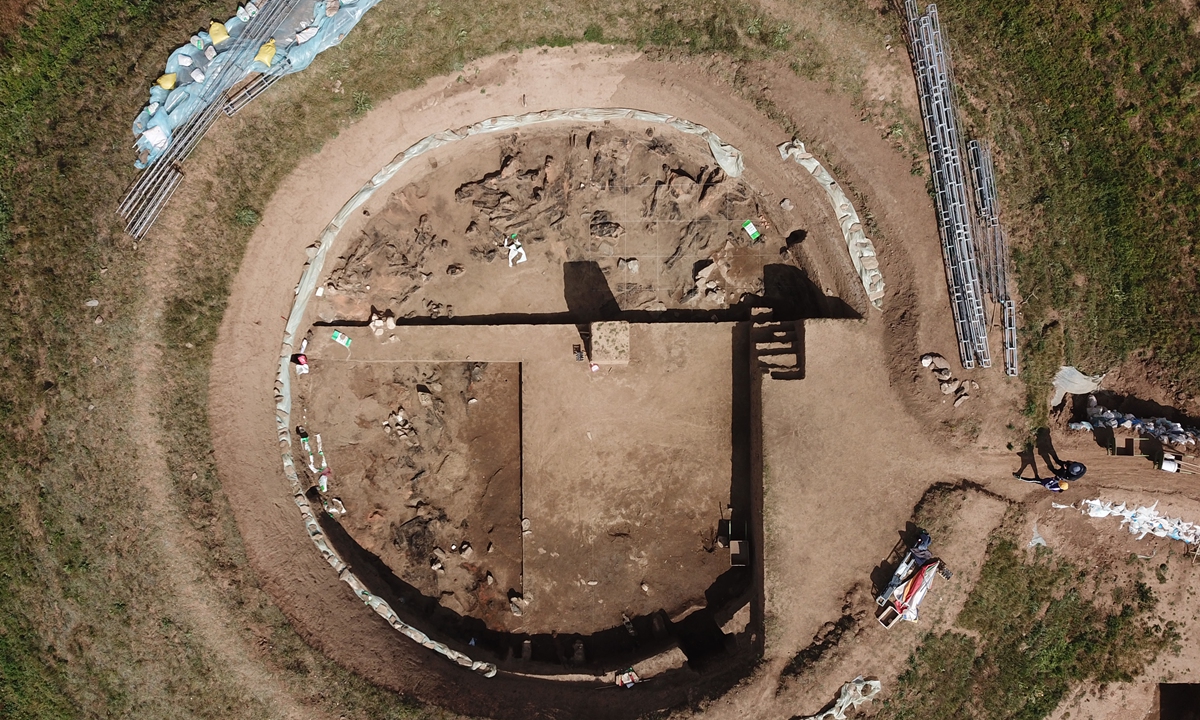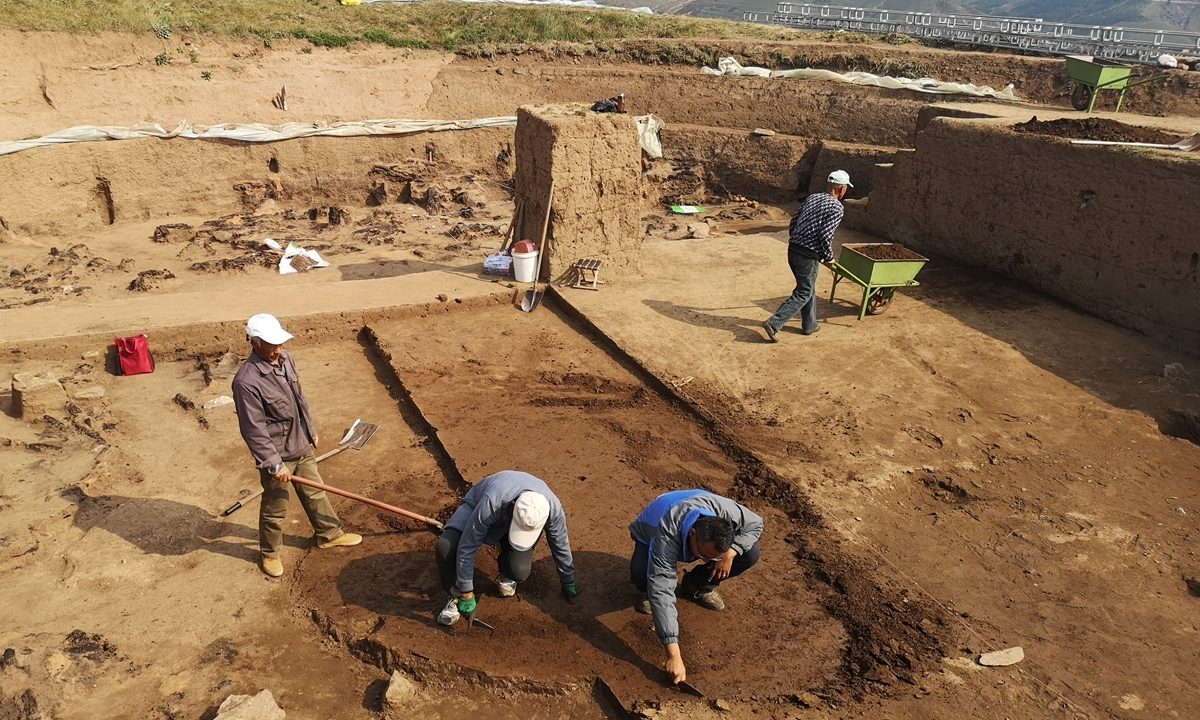Chinese archaeologists excavate more than 1,500-year-old imperial worship site in North China’s Inner Mongolia Autonomous Region
By Chen Xi Source: Global Times Published: 2020/10/29 19:22:26

Photo: Courtesy of Zhang Wenping
Chinese archaeologists have excavated a more than 1,500-year-old imperial worship site from the Northern Wei Dynasty (386-534) in North China’s Inner Mongolia Autonomous Region, uncovering precious evidence for the study of ancient China’s imperial heaven worship and the ritual system of the Northern Wei Dynasty, a Chinese archaeologist said on Thursday.
“This is the first time that China has excavated a Northern Wei Dynasty imperial worship site. We also found an imperial palace site for the emperor’s short stays away from the capital in the northwest of the imperial worship site,” Zhang Wenping, deputy head of the Regional Research Institute for Cultural Relics and Archaeology, told the Global Times on Thursday.
Located in the north of Hohhot, capital city of the Inner Mongolia Autonomous Region, the site covered an area of about 10,000 square meters. The Chinese archaeology team has evacuated more than 1,300 square meters of the original site, and has determined its general shape and structure.
“The next step for us is to figure out the situation and layout of some specific parts of the site,” Zhang said.
Historical documents show that Emperor Xiaowen visited the place for a ceremony worshiping Heaven in 494 before he relocated the state capital. Chinese archaeologists estimate that the site is the place where the emperor worshiped, and the site was used roughly between 430 and 490.

Photo: Courtesy of Zhang Wenping
According to Zhang, the Northern Wei Dynasty imperial worship site was discovered in the 1980s, but formal archaeological excavations on the site only began in 2019.
Archaeologists found the ruins of a round house used for the emperor’s worship in the middle of the site. The inner diameter of the house was about 15.5 meters and the outer diameter about 32.5 meters. A doorway of about one meter wide was discovered in the southeast of the house, while a small amount of pottery pots used for sacrifices were also unearthed.
Zhang noted that the Northern Wei Dynasty imperial worship site had three worship platforms that are older than the Temple of Heaven in Beijing built during the Ming (1368-1644) and Qing dynasties (1644-1911).
Compared with the Temple of Heaven in Beijing, whose second platform for worship is a flat platform, the second layer on this site was a round house, which showcases the characteristics of the worship ritual system among the nomads in northern China.
Posted in: CULTURE & LEISURE